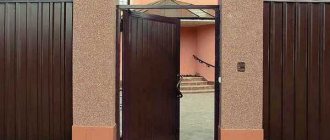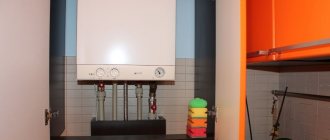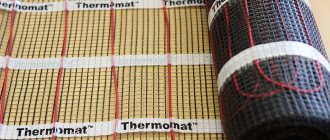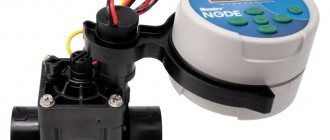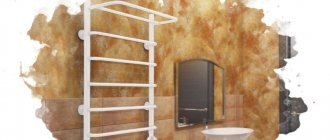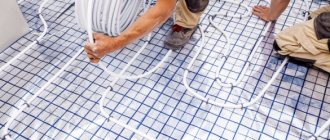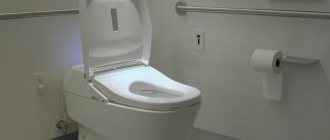When summer comes and the air temperature rises relentlessly, air conditioners become more popular and in demand than ever. Everyone wants to have an even and comfortable temperature in their apartment so as not to swelter from the heat and feel good. But the desire to save money or the inability to install additional air conditioners in other rooms at a particular point in time force one to ask unusual questions, in particular, is it possible and how to cool the entire apartment with one air conditioner?
Relevance of a “double” split system
In the private sector, there are usually no problems with installing several devices for different rooms. But if the owner does not want to spoil the facade with several bulky boxes, it also makes sense to consider a multi-split.
Business-class high-rise buildings are equipped with centralized systems, so the issue of air conditioning for an individual apartment is removed. In other cases, the installation of climate control equipment must comply with certain rules.
The dimensions of installed suspended units, for example, duct or cassette systems, are limited by the height of the ceilings. A quota has also been set for the total energy consumption in the apartment, which regulates the power of the supplied electricity. But most of all the rules concern external blocks.
In Europe, external blocks have long been mounted on roofs or placed on the inner side of the yard, which preserves the aesthetics of the facades
The installation of climate control equipment on the façade and outside of some buildings is prohibited by law or individual operating rules. But residents are offered designated places for such purposes on the balcony, roof, technical floor, and in special niches.
For small venues, square meters are not enough. One apartment is usually allocated only one space measuring about 60 cm by 1.5 m. The most expedient solution in this case would be to install a simplified multi-split system.
What is a multi-split air conditioning system
In a classic split system, each internal module has its own external module. An apartment with several rooms will require 2 to 4 such devices. In some cases, such a scheme cannot be implemented. These include:
- lack of permits for the installation of several outdoor units;
- air conditioning of historical buildings in which it is necessary to preserve the original appearance of the facade;
- private construction: many external modules are not provided for in the architectural design and reduce the aesthetic impression of the building.
In this case, a multi-split scheme is used. In it, a single powerful outdoor module, installed in a permitted or inconspicuous place, serves from 2 to 4 indoor ones. Separate pipelines are laid to each of them from the external unit or from the intermediate manifold.
Results
Are there air conditioners for 2 rooms? The modern market offers a variety of devices for every taste and budget, including those for cooling or heating several rooms at the same time. If you follow the rules, you can install from two to eight air conditioners in an apartment, even if you live in an ordinary multi-story building.
For these purposes, you can use multi-split air conditioners. This is a modern and effective solution for apartments and country houses, although in the latter the problem is not so acute. With proper installation and regular maintenance, such air conditioners will serve you well for many years.
We are sure that among our readers there are owners of multi-split systems and professional installers. Share your experiences and recommendations in the comments below. Tell us what difficulties you encountered during operation or installation, what you like or don’t like about multi-split systems.
Good luck!
What is the difference from a conventional split system?
Functionally, from the user's point of view, a multi-split is not much different from a conventional air conditioner. The differences are as follows:
Installation features
Place the external unit in an authorized or inconspicuous place. Whenever possible, we try to minimize the total length of the routes.
It is necessary to provide for a sufficiently efficient drainage of drainage water - after all, the compressor power is increased, in proportion to the number of connected indoor units. (remove, does not depend, drain from each internal)
High-level systems include a distribution manifold; in low-end systems, pipes are laid from each internal module to the external one.
Number of premises served
Entry-level devices serve 2-4 rooms. Many manufacturers offer such models. The most powerful ones cope with 6-8 rooms.
Pros and cons of using
Traditionally, when purchasing an air conditioner, an outdoor module with a compressor is installed outside the building. A single indoor air conditioner is connected to it. If it is necessary to create an optimal microclimate not in one, but in several (2, 3, 5 or more) rooms, according to this logic, an external module will have to be installed on the outer wall of the building for each internal device.
If you live in an individual household, then problems usually do not arise. The only obstacle is that the decorative facade, hung with a number of bulky blocks (even in special boxes), does not look very attractive.
For residents of city apartments, this option is often simply unacceptable. Housing operating rules or legislation clearly limit the number of external blocks hung on the facades of buildings. This is usually one unit with limited dimensions. In some cases, a secluded corner on the technical floor or under the roof, in the niches of buildings, is even allocated for such purposes. As a rule, the size of the seat does not exceed 0.6 by 1.5 m. In such a technically difficult situation, the only way out is to use a system with one outdoor unit and several indoor units working with it (from 2 or more, depending on the number of rooms in the apartment ).
Using a multi-split system of the described type has both pros and cons. It is important to take into account all the nuances. Then climate control equipment will only delight you with its work.
Let's start with the advantages
- The external unit has great power and performance. Air exchange and the creation of an optimal microclimate can be carried out in rooms of various sizes.
- Low noise level during operation.
- An impressive range of indoor modules in different sizes and designs.
- Possibility of connecting internal elements in different versions to one outdoor module.
- Independence of the choice of power of individual elements from the outdoor unit. The main thing is that in total it does not exceed the total power of this block outside.
- The ability to create optimal conditions and climate in an apartment with a large number of rooms, when it is not possible to mount several separate modules on the wall of the building.
The disadvantages of this type of multi-split system include a number of factors.
- Difficulty in installing equipment, requiring the involvement of specialists.
- Installation is carried out on an ongoing basis. Changing the locations of modules in the future will be problematic.
- If the external unit breaks down (if the option with one compressor is selected), all rooms connected to it will remain without air conditioning.
- It is impossible to set different modes (air cooling/heating) in separate rooms. The problem is solved by purchasing an external unit with several compressors.
- The high cost of equipment (compared to the purchase of conventional air conditioners and the proportional number of external units) is obtained due to the use of innovative technologies in technically improved climate systems of this type.
general information
If you live in a house or apartment with several living rooms, then you probably dream of fresh, cool air in each of them. And if you purchase a heated air conditioner, you can live comfortably in early autumn, when the heating has not yet been turned on, but it is already cold outside.
When solving this problem, only one thought comes to mind for the average person - installing an air conditioner in every room. After all, you can purchase an air conditioning kit consisting of several outdoor and external units, and forever solve the problem of the lack of a comfortable microclimate.
In theory, this solution seems logical, although expensive. But what do we get in practice? If you live in a country house, then you will not have any problems. But if you plan to install such a system in an apartment building, you are guaranteed to encounter one serious problem - there is space on the facade for mounting only one outdoor air conditioner unit.
Let's imagine that you are lucky and there is enough space on your façade to install several blocks at once. In this case, you need to remember that each apartment is artificially limited in the amount of electricity consumed. You probably simply won't be able to turn on two air conditioners at once, since your electrical networks are not designed to handle such a large load.
What if you have space and the networks can handle it? In this case, be prepared for multiple violations: to install air conditioners, you will have to partially destroy the load-bearing walls of the building in several places, and such unauthorized actions often lead to fines and complete dismantling of the air conditioning system.
Obviously, purchasing several air conditioning systems is not advisable. This is expensive and difficult to implement in real conditions. But what to do if you want to install at least two air conditioners in an ordinary apartment? There is only one answer: multi-split system.
Features of the functioning of air conditioners
It is technically possible to connect up to 7 internal boxes to one outer box. There are no clear connections between the power of the outdoor unit and the number of indoor units. One external person can work in a company with either two or three internal ones.
When calculating the circuit, we proceed from the total power of all indoor units, which must fit into the range of min and max values of the outdoor cooling capacity (+)
Conventional multi-splits differ from expensive and advanced multi-zone installations by the inability of indoor units to operate in a heat-cold pair.
They can function only in one climate direction - either all for cold, or all for heat. If you turn on the units in opposite modes, the equipment will not start.
But you can set different temperatures on each device. But you need to stay within one mode - either cooling or heating.
Duct air conditioner
Duct air conditioner is the most expensive, labor-intensive to install, but aesthetically pleasing climate control equipment. Unlike other types, the duct system is a hole (it is placed on the ceiling or wall to absorb and release air), which is covered with a ventilation grille.
The indoor unit itself is placed in the inter-ceiling space, and since the size of the box will be at least 30 cm, an unused place is chosen for it, for example, in the corridor or toilet. Tubes - air ducts - are stretched from the main unit to other rooms, which create a favorable climate.
The duct system has a number of advantages, and this is not only invisibility in the interior, but also the ability to combine functions such as cooling, heating and ventilation. The disadvantages include the high cost, as well as the creation of the same temperature for all rooms.
Varieties
Modern multi-zone air conditioning systems (multi-split systems) are a set of equipment with one module for installation on the facade and two (or more) for installation in rooms, each of which is installed in a separate room. Air conditioning occurs through the operation of an inverter system, which is the most innovative. The devices use the latest developments in the field of climate control.
Equipment sets traditionally consist of a number of components.
- External module. Mounted outside on one of the walls of the building.
- Indoor units (2 pieces or more) for placement in rooms inside the house.
- A set of communications for combining and operating elements of climate control equipment with each other.
- Control panels, one of which becomes the main one.
In this case, you can buy a ready-made kit from one manufacturer, or you can assemble it yourself from the necessary elements. Pre-assembled multi-split systems include several types of indoor units: wall-mounted, console, cassette and floor-ceiling. For apartments, wall-mounted or floor-ceiling indoor units are often purchased.
There are also stationary multi-split systems with an outdoor unit equipped with two compressors. Such equipment can operate by simultaneously heating the air in one of the rooms and cooling it in the other.
Which air conditioner is better to choose for two- or three-room housing?
In a 2-room apartment with a small internal space, you can install a conventional split system with correctly selected power, which will allow you to save a lot of money. It is better to install the indoor unit in the hallway connecting two living rooms. In an adjacent layout, it is better to place the device opposite the door of one room so that the cooled air can freely pass to another room.
For spacious 2-room and 3-room apartments, it is better to choose a ducted type of equipment or a multi-split system.
Duct air conditioners are optimal for apartments and houses, the design of which allows for hidden placement of internal units in the inter-ceiling space. If this is not possible, opt for a multi-split system with open fixation of internal units.
If these options are not suitable for some reason, you will have to install separate split systems in each room, followed by installation of several outdoor units from the front of the house.
Night mode of the air conditioner: operation, features
Equipment calculation
It is not difficult to make the necessary calculations for a multi-split system. You can handle it yourself. There are elementary formulas and average values of parameters. To do this, first of all, determine the power of the climate control equipment based on the various parameters of the cooled room. The main one is the area of the rooms.
Conditionally for 10 sq. m calculate 1 kW of device power. This value is approximate, since other parameters of the air-conditioned space are also significant (ceiling height, the usual average number of people in the room, furniture, the presence of various sources of thermal radiation).
The average calculation is most suitable for domestic residential premises. For example, for a room within 20 square meters, an air conditioner with a power of 2 kW is suitable. If the room has a high ceiling, or there are additional large household appliances (plasma TV, refrigerator), then you should choose an air conditioner with a power reserve of within 30%. The required equipment power will be 2.1-2.3 kW.
The calculation of a multi-split system for a 2-room apartment is carried out in such a way that the sum of the capacities of the two indoor units does not exceed the capacity of the outdoor one.
For example: there are rooms with an area of 18 and 25 square meters. Accordingly, we choose for them air conditioner 1 with a power of 2 kW and air conditioner 2 with a power of 2.6 kW. The sum of the powers of the two indoor units will be 2 + 2.6 = 4.6 kW.
For reliable operation, we select an external module with a power of at least 4.6 kW.
You should not deviate too much from this figure. A lower value will lead to incorrect operation of the entire system and damage to its devices. A large supply will make the operation of a multi-split system uneconomical.
FEATURES OF CHOOSING AN AIR CONDITIONER FOR SEVERAL ROOMS FOR A HOME
When choosing air conditioning devices, they are primarily guided by the power parameter: it should approximately correspond to 1 kW per 10 sq.m. premises. You shouldn’t take less, as in this case the air conditioner will turn on frequently, thereby increasing the risk of problems. However, it also makes no sense to buy a device that is too powerful; it will not cool the air more efficiently and the money will be wasted.
As for installation, this process is quite labor-intensive, so it is better to entrust it to professionals.
Operating principle of the air conditioner
Any air conditioner operates using a liquid substance - freon, which is capable of either absorbing (during evaporation) or releasing heat (during condensation). The device ensures a change in the state of aggregation due to pressure and temperature, which allows the air to be cooled. Thus, when the refrigerant evaporates in the heat exchanger of the indoor unit, it takes away heat, and when it condenses in the outdoor unit, it releases it. The physics of the process is the transfer of heat from one environment to another (in the case of cooling, from indoors to outdoors).
The main parameter that needs to be taken into account when choosing such equipment is cooling capacity, or cooling power. This figure can be indicated either in kW or in special British thermal units (BTU). The dependence of power on cooling area is simple - per 1 sq. m. requires 1 kW (or 3412 BTU). On air conditioners from different manufacturers you can find two types of markings:
- BTU power index: 05 is 5000 BTU per hour, which corresponds to 1.5 kW and serves an area of 15 sq.m.;
- 07 – 7000 BTU per hour, productivity 2.1 kW for an area of 20 sq. m.;
- 09 – 9000 BTU per hour, 2.6 kW and 26 sq.m. etc.
- 20 – 2 kW, 20 sq.m.;
Air conditioner power is calculated based on the area of the room
Clearly limited power is the main problem that does not allow one device to cool several rooms at once. The air conditioner will qualitatively reduce the temperature only in an area corresponding to its parameters.
Operating principle of the equipment
What is the difference between such a split system when compared to a conventional air conditioner? The peculiarity is the triple division of the freon circuit.
The first part is located in the external block and consists of a compressor, flow dividers, and a condenser heat exchanger. The latter has 2 sections.
The compressor is forced to work constantly, even if one external unit is turned on, so more reliable elements with a resource reserve (+) are installed in such systems
The remaining two parts are located in indoor units and consist of evaporators and capillary tubes. All participants in the scheme are connected to each other by freon lines.
The operation of this scheme is based on the property of liquids that can absorb heat during evaporation, but, on the contrary, release it during condensation. The agent in refrigeration systems is freon, which circulates in the circuit.
Heat is absorbed by the indoor units and sent to the outdoor unit due to the thermodynamics of the agent's transition from liquid to gas and back.
Hot freon leaves the compressor under pressure and runs into the separator, where it splits into two to cool two rooms. Once in the evaporator, freon will have to transition to the gas state. Why does it take heat from room air, which is pumped by a fan.
Next, the freon is sent to the condenser heat exchanger (also 2 sections), where it is cooled to a liquid state.
In this way, the process of cooling the premises occurs. But the equipment can also work for heating. In this case, the direction of movement of freon changes.
Indoor unit location for cooling multiple rooms
In an effort to save money or if it is impossible to install several external units, some try to position one powerful air conditioner so that it immediately cools 2 or 3 rooms. There are several common options here:
- placing the air conditioner in the corridor, provided that it has access to all rooms where cooling is required;
Often the air conditioner is placed in the corridor so that it cools several rooms at once - placing the device opposite the door in adjacent rooms so that the air flow from one room immediately enters the other.
Some install an air conditioner opposite the door to adjacent rooms so that one device cools several rooms at once
Such an arrangement is possible, but you should understand that it is simply not possible to achieve complete air cooling in several rooms at once. It's all about poor air exchange - even through an open door, no more than 10-15% of the cold will escape into another room, which makes it impossible to create a uniform temperature in the apartment. In addition, such an arrangement of the air conditioner entails a number of inconveniences:
- When installing in one room a device with a cooling capacity designed for the entire area of the apartment or several rooms, a too sharp temperature difference will form - in the room where the air conditioner is located it will be very cold, since its area is smaller than the potential of the equipment.
- Air conditioners have a thermostat that stops the cooling process when the temperature specified by the user is reached. Thus, a powerful device will quickly cool the room and stop, preventing the temperature in adjacent rooms from being fully reduced.
What to choose
If finances are limited, then you should buy the most powerful air conditioner and consider options where you can install it so that it cools 2 rooms:
- you can install equipment in the corridor, but if there are exits from it to other rooms;
- in adjacent rooms, you can place the device opposite the door, so cold air from one room will move to another;
- You can install a fan in an air-conditioned room that will direct cold air to other rooms.
Another option is to turn on the air conditioner to the minimum temperature and close the door. After the system stops, the door can be opened, the cold flow will come out and partially cool another room.
Note! The proposed options will not allow you to fully cool several rooms at once. Due to poor air exchange, no more than 15% of the cold will escape into another room.
If the budget allows, and the design of the room provides for the placement of hidden indoor units, then you can consider the option of ducted climate control equipment. At the exit, the system is closed with a decorative ventilation grille and can serve several rooms at once.
When choosing a duct air conditioner, you should pay attention to the model range from Mitsubishi Electric. The products of this brand have good performance and meet all consumer requirements.
For example, the Mitsubishi Electric SEZ-KD50VAQ/SUZ-KA50VA inverter model with a power of 5 kW serves 2 rooms with a total area of up to 50 square meters. m. At the same time, the air conditioner works not only for cooling, but also for heating and ventilation. The control is automatic, which will allow you to control the temperature in the rooms.
If it is not possible to install a ducted air conditioner, then you can consider the option of a multi-split system. Here are some popular models:
- Mitsubishi SCM40ZJ-S/2xSKM20ZSP-S - highly reliable equipment with adjustable operating frequency over a wide range;
- Panasonic CU-2E15PBD/2-E7RKD - reliable system with low noise level, suitable for areas with warm winters;
- General Climate 2XGC/GU-M2A18HRN1 is an affordable equipment with a set of all important functions, but the main advantage is the range of outdoor temperatures for operating the device;
- Lessar LU-2HE14FMA2-MHE07KMA2 - an inexpensive option with a universal appearance and a wide range of operating temperatures;
- Electrolux EACO/I-14 FMI-2/N3 x2 EACS/I-09HC is a compact system with precise control of the required temperatures.
Leaders among manufacturers of multi-split systems are Daikin, Mitsubishi, Toshiba. The price of their products is several times higher compared to the prices of analogues from competitors, but they will pay for themselves due to uninterrupted and long service life.
In conclusion, we note that it is important not only to know how to choose an air conditioner for an apartment so that it cools 2 rooms at once, but also to carry out accurate and correct installation of the equipment. After all, the durability, reliability and efficiency of its operation depend on this.
Post Views: View statistics 327
Ways to cool an apartment with air conditioning in one room
If an air conditioner is already installed in one of the rooms, but there is a need to lower the air temperature in others, then you can use one method - maximum cooling of one room. The air conditioner, designed for the area of a particular room, needs to be turned on to the minimum temperature, then go out and close the door. When the split system stops (which means that the thermostat has determined that the indicators have dropped to the set values), all that remains is to open the doors to the adjacent room - the cold air will partially escape and cool the second room. This is not an ideal method, since it will be cold in the first room, but this can be done, for example, if the air conditioner is in a bedroom in which no one is currently in, but there is a need to slightly cool the room from which the door to the cooled room opens.
There is another way - to create a directed air flow using a fan installed in the refrigerated room. But there will be similar problems: uneven cooling, overloading of the air conditioner, which is not designed for a large area. Additionally, there is another significant disadvantage - excess noise.
Types of multi-split systems
Additional blocks can be of different shapes and sizes
The multisplit system differs in the method of connecting devices: up to 16 indoor units of different capacities can be connected to one outdoor unit at once. This allows you to simultaneously cool or heat the air in different rooms, depending on their individual purpose.
There are two categories of multi-split systems: fixed and stacked.
Stationary MSS include one outdoor unit and several indoor modules. The number of connection connectors on the external device is equal to the number of internal ones. The outdoor unit of a multi-split system for 2 rooms is equipped with one or two compressors. In the latter case, room modules can be turned on for cold and heat at the same time, since they have different circuits. If the systems have one compressor, the modules inside operate in a single mode. Each of them is provided with a remote control (RC), the same for all devices.
The console block is installed against the wall on the floor or under the ceiling
Stacked multi-split systems consist of one external module and several internal units. They are connected using separators. It is possible to install three compressors in an external unit, operating on one circuit. All internal modules operate in a specific mode: “cold”, “heat” or “drying”. Internal modules are connected under the condition that their total power does not exceed the performance of the external device.
Types of indoor units:
- wall;
- cassette;
- floor-ceiling;
- console
All multisplits are equipped with remote controls, each of which can be configured when setting up the equipment. The first DP system has a privileged right and can control the entire system, creating a common task for the internal modules. For example, if a “cold” mode is created on one unit, it will automatically be extended to other modules.
Choosing a multi-split air conditioner
When choosing an air conditioner, it is important to pay attention to several key characteristics. First of all, choose the optimal power. It can be easily calculated based on the area of the room in which the air conditioner will be located. Use the table below to find the optimal power.
Please note the additional functionality. The most budget models can only cool the room. Devices in the mid-price category are equipped with cooling and heating functions. And premium segment models can additionally purify the air, which has a beneficial effect on well-being. Especially if you live in a metropolis.
Also pay attention to the form factor. Indoor air conditioning units can be floor-mounted, wall-mounted, ceiling-mounted or hybrid. The classic wall option is perfect for an apartment.
But if you need to cool or heat very large areas (from 80 m2), we recommend choosing hybrid systems. For example, wall-floor or ceiling-floor. In this case, you will have two indoor units that are mounted in different planes of the room.
Please note that inverter air conditioners are more expensive than conventional air conditioners, but they work more efficiently and, with timely maintenance, will serve you for many years.
Advantages and disadvantages
Multi-split systems for 3 rooms are actively used to create the desired temperature in rooms of different sizes. They can be used to heat rooms and cool them depending on the outside temperature.
Compared to conventional air conditioners, 3-room split systems have the following advantages:
- Power of the external device. MCC installs modules with increased productivity, allowing air exchange in large rooms.
- Quiet operation. This is achieved through a remote compressor, which is quite noisy.
- Big choice. Modules differ from simple air conditioners in appearance, shape, size, and mounting (ceiling, wall, floor).
- Installation of one external unit. When there is no space on the façade of a building to install several devices, the use of a multi-split system is justified.
Disadvantages of the device:
- Difficult installation of modules. To equip a duct complex, it is necessary to install communications connecting the outdoor unit and room units, as well as air ducts.
- Installation of a split system with two indoor units can only be permanent. It is impossible to move or rearrange them to another place. It is possible to dismantle such equipment, but this must be done by specialists.
- If the outdoor module breaks down, all rooms are left without air conditioning.
System components
External block of multi-split system
The MSS includes:
- External block. Installed on the outside of the building.
- Communication distributors: power mains, air ducts, pipes with freon inside, combining the external and indoor modules into a single complex.
- Room modules.
Indoor module
Basically, an air conditioner for 2 rooms with one outdoor unit is equipped with inverter compressors and is combined with indoor modules of different types and performance. All internal nodes, their categories or a separate block can work synchronously.
The use of an inverter modification of a multi-split system air conditioner significantly saves energy, since the capacity of the outdoor module is adjusted depending on the load.
How multi-split works
One air conditioner for two rooms is a unit of three blocks, one of which contains a heat exchanger for cooling freon, a flow separator and a compressor. It is installed outside. And the other two blocks are internal, one for each room.
Accordingly, a multi-split for 4 rooms will consist of five blocks: one external and four internal. All of them are connected to the external unit by freon lines - tubes through which gas circulates. Depending on the direction of movement, air conditioners operate either for cooling or heating.
The outdoor unit can have 7-8 ports for connecting internal ones Source btest.ru
For reference! An air conditioner for two rooms cannot heat one of them and cool the other; it operates in the same mode for all rooms. But in each of them you can set your own temperature.
Power selection
When calculating the performance of a multi-split system, several factors must be taken into account:
- Rooms in which a multi-split system will be installed: area, purpose of the room, heating system.
- Power of indoor units. Their total performance must not be allowed to exceed the power of the external module. There are online services to calculate this indicator.
- Pipeline length. The higher this indicator, the more powerful the blocks in remote rooms should be.
Among the inexpensive multi-split air conditioners are the following manufacturers: LG, General Climate, Midea. Sets of multi-split systems for 4 rooms are already distributed according to power. One outdoor module can cool eight rooms with a total area of up to 200 square meters. m.
When choosing a multi-split system, you need to take into account the placement of the modules: on the floor, wall or ceiling.
Installation of climate control equipment for 2 rooms
Installation of equipment has a number of difficulties, and therefore it is not recommended to install the system yourself. It is better to entrust this matter to qualified craftsmen, since the work process will require specialized equipment.
In some cases, it may be necessary to lay a route in the ceiling or wall, and therefore it is recommended to install the equipment during the period of repair work. Incorrect installation can significantly reduce the service life of the purchased equipment.
Selecting an installation based on characteristics
There is an opinion that a double split system should cost less than two separate appliances, but this is not true. Compared to the total price of two installations, one double installation will be 15-30% more expensive, even with the same power. The reason is the inverter operating principle.
Non-inverter air conditioners are cheaper and can be equipped with a winter kit. But there is little such equipment in the product range of manufacturers due to low demand.
Three types of indoor units
Internal modules of cassette, channel or wall type can be connected to the external unit. Let's consider when and in what rooms they are used.
The cassette unit is not suitable for rooms with low ceilings and/or small areas. These models are designed for large commercial premises - offices, restaurants, shops, cinemas.
Channel wiring also involves reducing the height of the rooms. This option is the most aesthetic, albeit expensive.
It would be appropriate in a country cottage, but not for two rooms, but for several rooms. You can make a common wiring with one or two external units.
Wall blocks are the optimal solution for an ordinary apartment or house with standard ceilings. They are easy to install and do not require large premises.
Technical parameters of devices
External units in double split systems are more reliable and the total length of their routes is longer when compared with conventional ones.
Indoor units are selected according to:
- power;
- range of outdoor temperatures;
- set of functions;
- length of communications;
- appearance.
The main functional parameter is the range of outdoor temperatures. It is important that the equipment operates in conditions that are below the maximum permissible. The efficiency of the equipment depends on the atmospheric load.
It is also important to consider the following three parameters:
- Corrections for additional heat inflows. Often, these coefficients require different indoor units for different rooms.
- The power of the outer box, which should be equal to the total cooling capacity of the indoor units plus correction factors. The outdoor unit may have 3 or 4 ports for connecting freon pipes, but only 2 are needed.
- Measurements of the maximum length of all freon pipes to the indoor units: each individually and the total number.
The disadvantages of the design include the need to install internal devices close to each other - next door. The distance depends on the length of the route in the selected model.
There is also a simplified formula: for 10 m2 you need about 1000 W of power. This calculation works for rooms with good thermal insulation. If the light enters the room from the south or southwest side, add another 25% to the indicators.
Manufacturers and models
Japanese companies Fujitsu, Mitsubishi, Toshiba are traditionally considered the most reliable manufacturers. They are also the most expensive brands.
The average price category is the Chinese General Climate and the Japanese Daikin. Budget series - Chinese Hisense, English-Chinese Dantex.
Of the 2-room models, you can consider the following:
- Mitsubishi Electric MSZ-HJ25VA-ER1×2/MXZ-2HJ40VA-ER1: for 50 m2 with deodorizing and anti-allergenic filter, low noise level of 20 dB, night mode.
- General Climate GC-M2E18HRN1: for 53 m 2, there is a mode of ventilation, self-diagnosis, drying, but no fine filters.
- Electrolux EACS/I-07HP+EACO/I-14 FMI-2: for 40 m 2, economical energy consumption, heating operates at temperatures down to –15 degrees.
- Fujitsu Inverter AOYG14LAC2: an external unit that can be equipped with budget internal ASYG07LMCA (15 m2) or large-area ASYG07LUCA (20 m2) and ASYG09LUCA (25 m2).
- Hisense AMW2-20U4SNC1/AMS-09UR4SVEDB6x2: for 50 m 2, two-way condensate drain connection is provided.
- Dantex RK-2M24SEGE: for 70 m 2, there is a system against ice formation, but it works for heating at temperatures down to –7°C.
The product lines include fixed and dial systems. The first ones imply a complete set from the manufacturer. In the second case, you can select the blocks yourself.
How to choose the right system
First of all, you need to know that the main outdoor unit of a multi-channel cooling system has large dimensions and weight compared to what works for one room. Therefore, before buying an air conditioner with 2 internal units and one external one, you need to think about where to place it, whether the facade decoration will withstand such a load, and also take care of reliable mounting and foundation.
An original solution for installing an external unit for a private home Source mitsubishi-electric.org
All multi-split systems are equipped with expensive inverters and the highest quality compressors, since they operate almost continuously and must have a large margin of reliability. Therefore, these installations are not cheap. In the best case, two air conditioners per outdoor unit will cost the same as two stand-alone units, but usually a multi-split is 15-25% more expensive. As does its installation, which requires more time and consumables.
If these factors do not bother you and you have already made a decision, then you should choose a unit primarily based on power, which depends on the total area of the premises served. The easiest way to select power is to calculate the area and divide it by 10. For example, for cooling 100 sq.m. you will need a 10 kW device. But this formula does not take into account ceiling heights and other criteria, so it is better to use special tables.
Table for selecting an air conditioner by power Source kupisantehniky.ru
Advice! If the windows of at least one of the rooms face west or south, it is better to take a system with a power reserve of 10-20%.
When choosing two air conditioners with one external unit, you need to pay attention to the set of basic functions.
- Cooling only – these models are the most inexpensive and are suitable for homes primarily used for summer use.
- Cooling and heating are mid-priced models.
- Cooling, heating and air purification are the most expensive.
For a private country house with autonomous heating, the heating and cleaning functions are not as important as for a city apartment, which allows you to save on them and buy a budget unit.
Another important nuance is the total length of the route for which one external unit for 2 air conditioners is designed. In other words, you need to make sure that the length of the channels is enough to stretch them from the outdoor unit to the installation points of room appliances.
Specifics of installation and operation
If you compare the cost of installing two separate air conditioners and a double split system, the amount will be approximately the same. The reason is the similar length of the tracks. The price of installation directly depends on the length of interblock connections, cables, freon tubes.
When the installation of an air conditioner is carried out under general repair conditions, it is advisable to split the installation of the split system into 2 stages.
First, groove the walls, install inter-block communications, secure the outdoor unit, and work on the internal equipment after the finishing of the premises.
It is better to place the outdoor unit on the facade under the window so that the technician has access to it during maintenance.
Operational features of the split system:
- The outdoor unit operates at full power even if the air conditioner is turned on in only one room. This increases the energy consumption per device.
- Two devices cannot operate simultaneously for heat and cold. But if the system supports ventilation mode, you can turn on heating in one room and set ventilation in another.
- If one outdoor unit breaks down, two rooms will be left without air conditioning.
Indoor units, regardless of their number, require periodic sanitary maintenance.
Mold on the evaporator fins and fan turbines reduces the performance of the device by half and contributes to the appearance of an unpleasant odor.
Is it possible to use one air conditioner for two or three rooms?
Each air conditioner has a certain power parameter that determines the maximum cooling area of the internal space. Many people think that if you buy one powerful split system, it will be enough to cool two or three rooms in the house. However, experts do not recommend buying one air conditioner to cool multi-room apartments, and not because they want to make more profit from the sale of several devices, but for a completely different reason.
One powerful air conditioner is capable of cooling 2 or even 3 rooms in a residential building, but after installing the indoor unit in one room, where it is fixed, cooler air will prevail than in other rooms. And such uneven cooling can create an uncomfortable and unsafe atmosphere in the house, causing colds.
How to choose the right place to place the outdoor unit
Few places have a technical balcony. The most convenient place to place the external module is next to the fire escape. Next comes a place next to the balcony, then under the window.
In these places they can be maintained without the involvement of industrial climbers, which significantly reduces operating costs.
Let's summarize: why you should choose a multi-split system
Installing a multi-split does not allow you to save money. It is used in apartment buildings in the absence of permits for the installation of several outdoor units, in historical buildings and in private houses for aesthetic reasons.
Sources
- https://sovet-ingenera.com/vent/cond/split-sistema-na-2-komnaty.html
- https://www.clima-vent.com/rating-luchshih-multi-split-sistem/
- https://stroy-podskazka.ru/split-sistemy/na-2-komnaty/
- https://aqua-rmnt.com/poleznye-sovety/kak-ohladit-kvartiru-odnim-kondicionerom.html
- https://StrojDvor.ru/kondicionirovanie/vidy/kondicionery-s-dvumya-vnutrennimi-blokami-i-odnim-vneshnim/
- https://vmeste-masterim.ru/dva-kondicionera-s-odnim-vneshnim-blokom.html
[collapse]
Types of indoor units for multi-splits
All existing types of air conditioners can be easily connected to the outdoor unit in different variations.
Cassette
If cassette indoor units are not used in an apartment with a standard ceiling height, then this is possible in your own home. But you need to take into account that the unit body occupies from 25 to 40 cm of sub-ceiling space and is mounted mainly in Armstrong-type suspended ceilings. In modern homes they look too formal, so they practically never appear. But if desired, you can mount the cassette block into a plasterboard ceiling.
Only the front panel of the device is visible on the ceiling surface Source lr-sanitechnik.be
